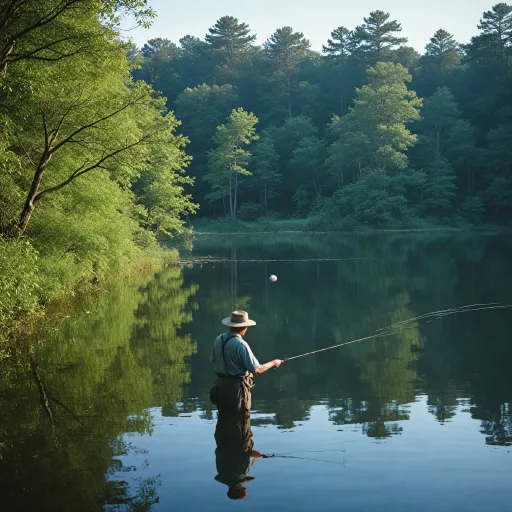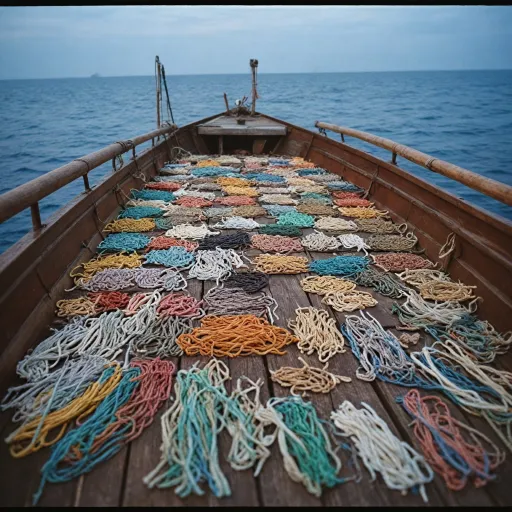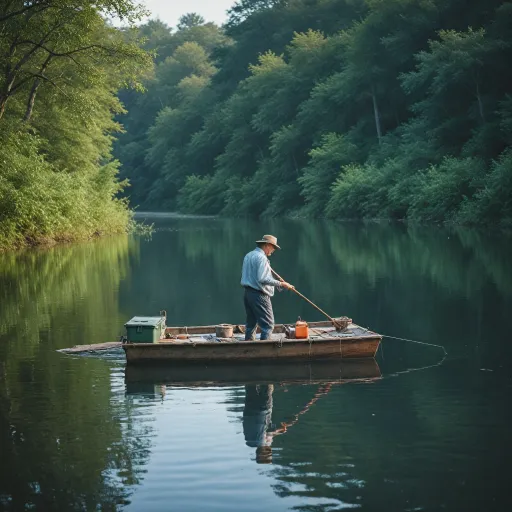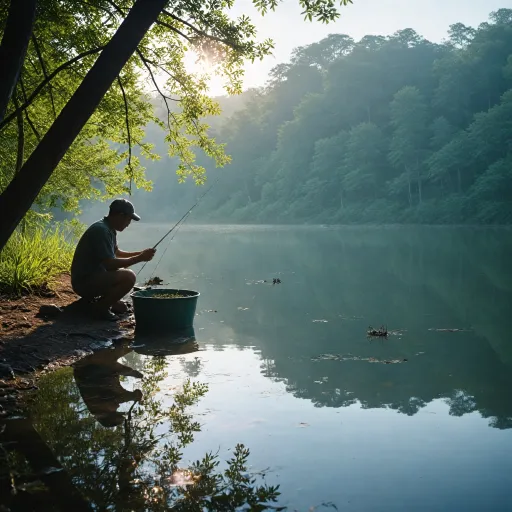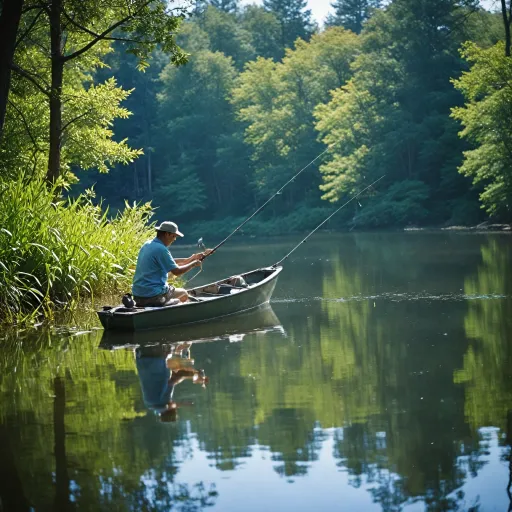
What is Braided Line?
Unraveling the Core of Braided Fishing Line
Braided fishing line, often referred to simply as "braid," is a popular choice among anglers seeking high-performance and versatile options for all fishing environments. Characterized by its ultra-thin diameter and exceptional strength, braided line is constructed by interweaving multiple strands of synthetic fibers, which can include materials such as Dyneema or Spectra. This process creates a line that is both durable and abrasion-resistant, offering significant advantages when navigating heavy cover or targeting big game fish. One standout feature of braid lines is their lack of stretch, which translates to better sensitivity and enhanced performance in detecting subtle bites. Anglers looking for a line that offers superior control and precision often turn to braided options, especially in situations where a strong abrasion-resistant line is required. The high strength-to-diameter ratio is another reason why braided fishing lines are among the best sellers in stores. Available in various lengths and weights, such as 150 yds or 300 yards, braided lines cater to a wide range of fishing scenarios, from saltwater expeditions to freshwater expeditions. Some products even come in unique color options like moss camo or vibrant blue to match fishing vibes and preferences. For those new to braid fishing or considering it as a gift, it's essential to take into account factors such as the line's specific application and the type of water you plan to fish. With countless choices available, finding the best options that match your needs can make for a more enjoyable and successful fishing experience. For more in-depth insights into choosing the right braided fishing line, you might find this detailed explanation of Varivas fishing line benefits helpful. It provides additional info on product selection and performance characteristics.Advantages of Using Braided Line
Why Braided Line Stands Out
Braided fishing line has become a favorite among anglers for several compelling reasons. Its unique construction offers a range of benefits that can significantly enhance your fishing experience. Let's dive into why this type of line is often considered a game-changer in the world of fishing.
Superior Strength and Durability
One of the standout features of braided line is its high strength. Made from multiple strands of synthetic fibers, it provides exceptional tensile strength, making it ideal for tackling big game fish. This strength also translates to a thinner diameter compared to other lines, allowing for more line to be spooled onto your reel. Whether you're dealing with heavy cover or targeting species in saltwater or freshwater, the abrasion-resistant nature of braid ensures it holds up under pressure.
Enhanced Sensitivity and Performance
Braided line offers ultra sensitivity, allowing anglers to feel even the slightest nibble. This is particularly beneficial when fishing in deep waters or when using subtle baits. The lack of stretch in braid means that your hook sets are more immediate and effective, increasing your chances of a successful catch. For those who prioritize performance, this line is a top contender.
Versatility Across Environments
Whether you're fishing in moss camo environments or clear waters, braided line adapts well. Its versatility makes it suitable for various fishing techniques and conditions. From casting in heavy cover to trolling in open waters, braid delivers consistent results. Plus, with options like moss green or blue, you can choose a color that best matches your fishing environment.
Cost-Effective and Long-Lasting
While the initial cost of braided line might be higher than other options, its durability and long lifespan make it a cost-effective choice in the long run. With proper care, a spool of braid can last for years, reducing the need for frequent replacements. This makes it not only a practical choice but also a wise investment for avid anglers.
For more insights into how braided line compares to other types, you might find this understanding of monofilament useful.
Choosing the Right Braided Line for Your Needs
Guidance on Picking the Ideal Braided Line
When it comes to choosing the right braided fishing line for your needs, understanding the components and quality attributes is critical for optimal performance. Each fishing scenario requires different features, so here’s a guide to help you navigate your options:
- Strength and Abrasion Resistance: For those fishing in heavy cover or seeking big game, you'll want a high strength line that is also abrasion resistant. Products such as the stars braid or ultra line can provide the necessary durability and reliability in rugged conditions.
- Line Thickness and Feel: Consider the thickness, as it affects casting distance and sensitivity. Opt for a thinner line for a smoother casting vibe, especially in saltwater or freshwater settings. Thinner lines, like the braid yards, allow you to fit more onto your reel.
- Color and Visibility: Choose colors like moss camo or blue to match your fishing environment and reduce line visibility in the water. This can greatly improve your success rate, as well-camouflaged lines won't alert fish.
- Spool Size and Yards: Make sure to match the braid fishing line with the right amount of yds for your fishing reel. Filler spool sizes are perfect for stocking up, especially if frequently using the line. Keep info on spool capacity handy to avoid overfilling.
The right braided line can significantly enhance your fishing experience. Whether focused on saltwater dynamics or the intricacies of freshwater, the right features ensure your setup matches the species and water conditions. Shopping for braided fishing gear as a gift card or best sellers can also introduce you to popular choices favored by expert anglers. Always align your selection with your fishing environment for maximum effectiveness.
Proper Techniques for Using Braided Line
Mastering the Use of Braided Line for Maximum Performance
Using braided line can significantly enhance your fishing game, provided you know how to handle it correctly. Here are some tips to get the most out of this incredibly strong and durable product.- Knot Tying Skills: Braided line's ultra-thin diameter and lack of stretch can make tying knots more challenging. Practice essential knots like the Palomar or improved clinch to ensure secure connections. Knot strength is crucial, especially in heavy cover and big game fishing.
- Spooling Technique: Properly spooling braid on your reel is essential to prevent line slippage. Start by securing the line tightly to the spool with a mono backing, or use electrical tape as a base. Make sure the braid fills the spool uniformly to prevent tangles during casting.
- Drag Settings: Due to its high strength, it's easy to rely on the braid entirely. However, proper drag settings are critical to avoid line breakage and ensure smooth performance. Adjust your drag based on targeted fish and environmental conditions.
- Line Maintenance: Regularly check your braided line for cuts or abrasions, particularly if you're fishing in areas with intense abrasion from marine structures or heavy cover. Products like moss camo and saltwater freshwater braids offer strong abrasion resistance, but continuous inspection is still recommended.
- Color Considerations: Choosing the right color for your situation can impact your success rate. The blue and moss shade options are popular, yet always match your line color to your fishing environment for effective camouflage and better stealth.
- Filler Spool Efficiency: Make efficient use of your filler spool by matching the strength of the braid to your reel capacity. You can maximize your yds and yards by opting for suitable strand braid and braid fishing options, tailored to your needs.
Common Challenges with Braided Line
Challenges to Be Aware of When Using Braided Fishing Line
Despite the many advantages provided by braided fishing lines, there are some challenges that anglers may encounter when opting for this type of line. Understanding these can help in maximizing the performance of these high-strength strands.
- Line Knotting and Tangling: Braided lines can sometimes become tangled or form knots, especially with improper handling. Unlike some other fishing lines, the lack of stretch in braid can make it less forgiving, leading to issues when a knot forms. Instruction on tying reliable knots and managing slack can mitigate this challenge.
- Visibility: In clear water conditions, the visibility of the braid could potentially deter fish. Using lines with colors that blend into the environment, such as moss camo or blue strands, can sometimes ameliorate this visibility concern when fishing in clear waters.
- Heavy Cover Situations: Although braid is known for its strength and abrasion resistance, it can still pose a challenge in heavy cover. Braid lines can sometimes get wrapped around obstacles, making it critical to pair these with appropriate tackle to enhance maneuverability.
- Performance with Specific Reels: Not all reels are optimally designed for braided line, which can lead to performance issues. Ensuring your reel accommodates braid, or choosing a filler spool for proper capacity, is essential for maintaining the ultra performance of the line.
- Price Considerations: Braided lines might sometimes be more expensive than other alternatives like monofilament. However, their durability and low stretch provide long-term value that offsets initial costs. Anglers might find these products in specialized shops where proper information on braid yards and weight can guide purchases.
While these challenges are notable, understanding and addressing them can help maximize the utility of braided lines in both saltwater and freshwater environments. For further insight on adjusting to various fishing conditions, exploring discussions on monofilament lines and their dynamics could offer additional perspectives.
Comparing Braided Line to Other Fishing Lines
Comparing Braided Line to Other Fishing Lines
When it comes to choosing the right fishing line, understanding the differences between braided line and other types is crucial. Each type of line has its own unique characteristics, making them suitable for different fishing scenarios. Let's dive into how braided line stacks up against its counterparts.
Monofilament vs. Braided Line
Monofilament lines are often praised for their stretch and ease of use. They are generally more forgiving and can be a great choice for beginners. However, when it comes to strength and durability, braided lines take the lead. With their high strength and strong abrasion resistance, braided lines are ideal for heavy cover and big game fishing. While monofilament may offer a smoother casting experience, the ultra-thin diameter of braided line allows for more line on the spool, making it a favorite among seasoned anglers.
Fluorocarbon vs. Braided Line
Fluorocarbon lines are known for their invisibility underwater, making them perfect for clear water conditions. However, they lack the high performance and low stretch characteristics of braided lines. Braided lines, such as those with a moss camo or blue strand design, offer superior sensitivity, allowing anglers to feel even the slightest nibble. This makes them a preferred choice for those looking to improve their catch rate.
Choosing the Right Line for Your Needs
Ultimately, the choice between braided, monofilament, and fluorocarbon lines depends on your specific fishing needs. If you're targeting big game or fishing in heavy cover, the abrasion-resistant nature of braided line is unmatched. For those who prioritize invisibility and stealth, fluorocarbon might be the way to go. Meanwhile, monofilament remains a versatile option for general use.
Whether you're shopping for the best sellers or looking for a gift card to treat a fellow angler, understanding the strengths and weaknesses of each line type will help you make an informed decision. Remember, the right line can significantly enhance your fishing vibe and overall experience.
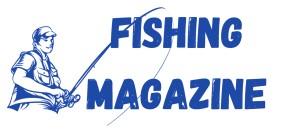
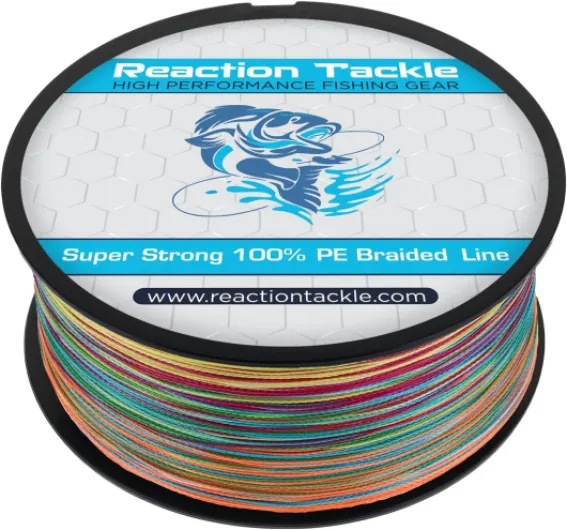
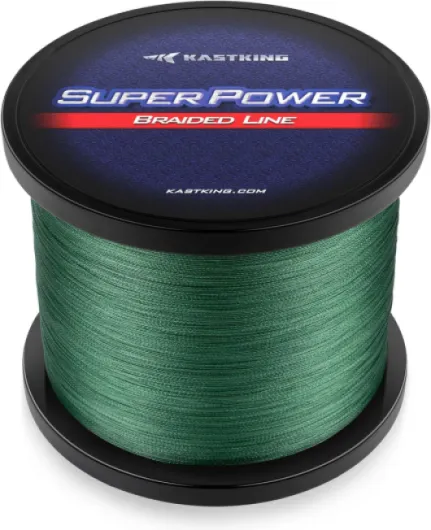
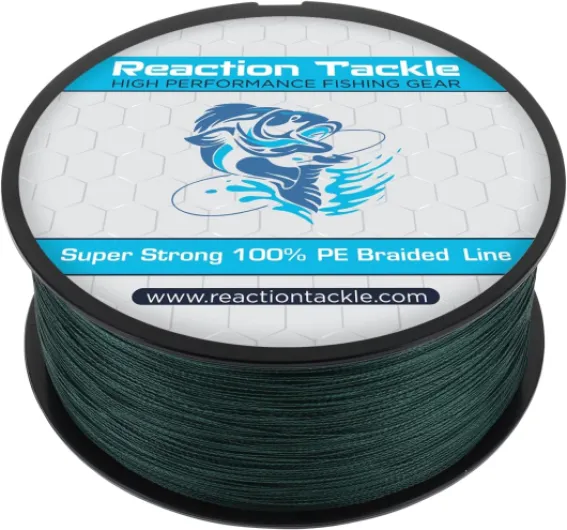
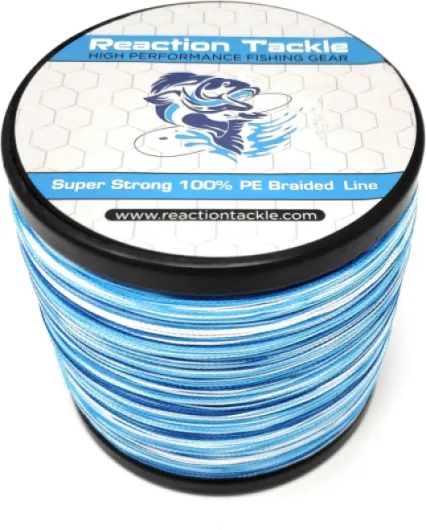
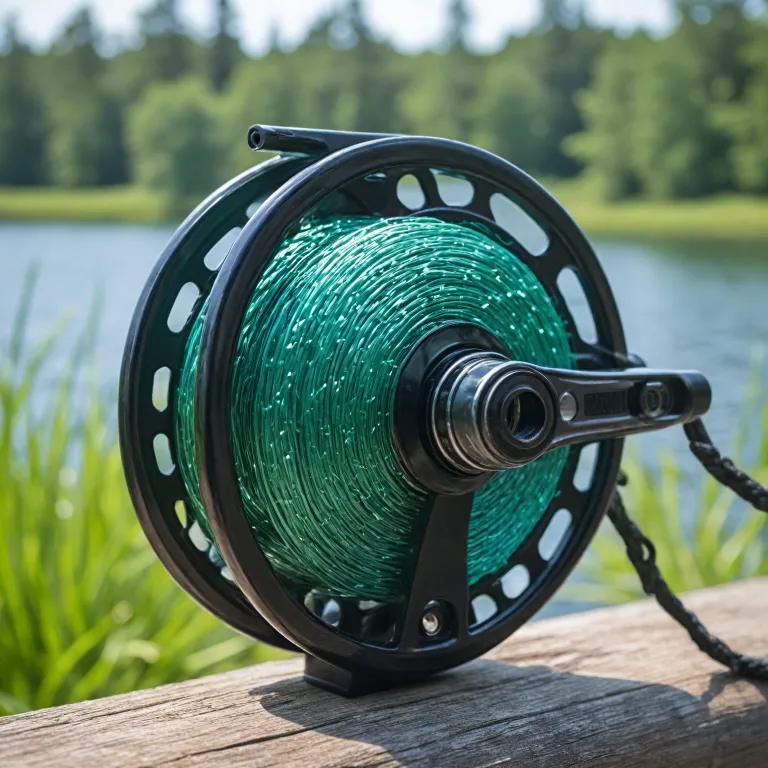
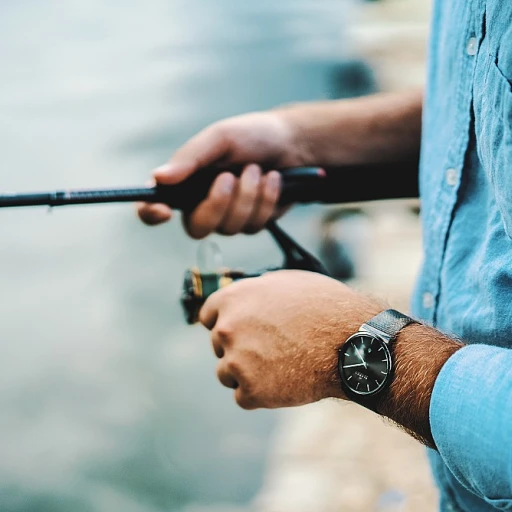
-large-teaser.webp)

